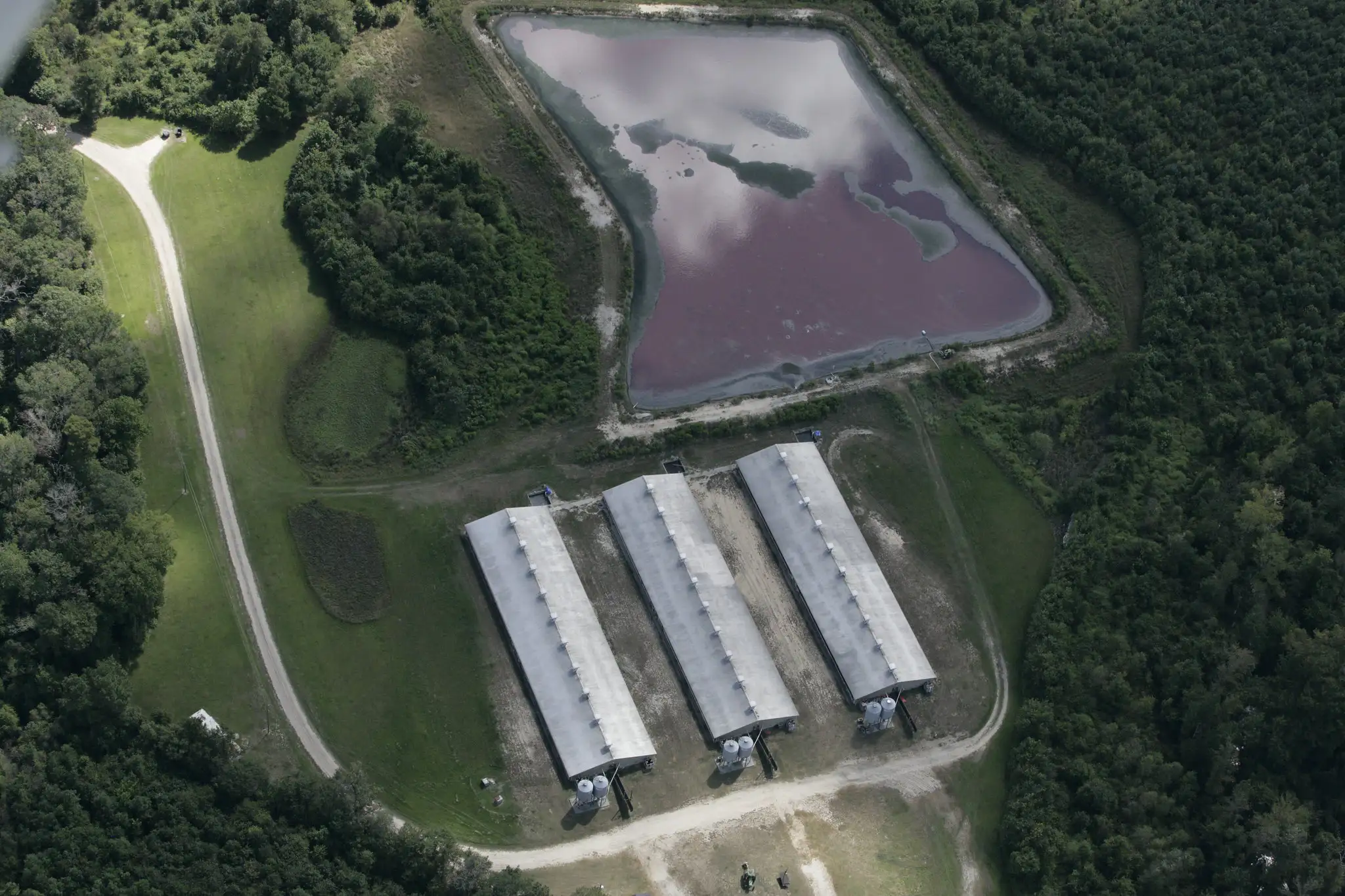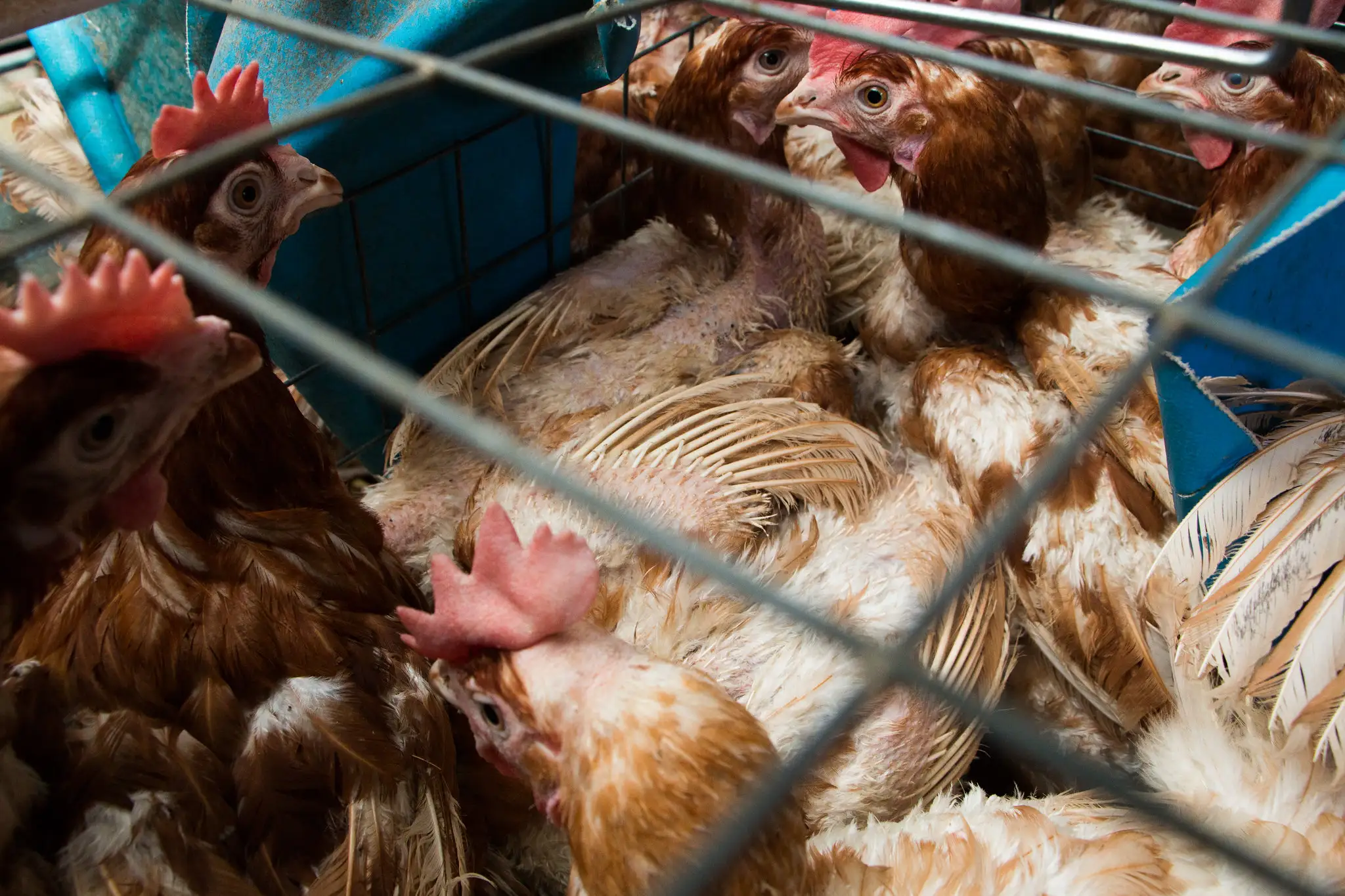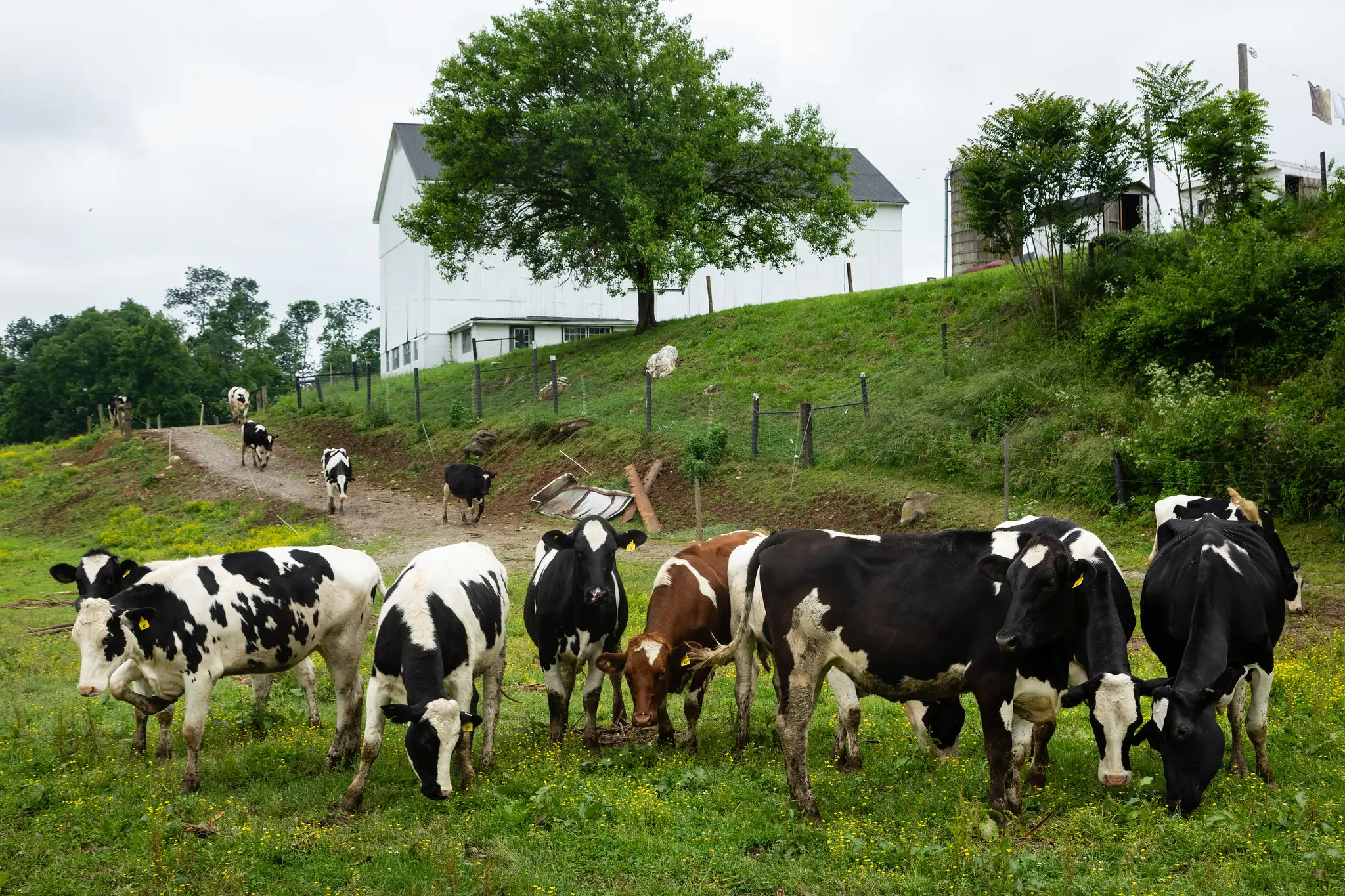In the U.S. the vast majority of meat and dairy animals are raised in close quarters, often indoors, in industrial facilities called Concentrated Animal Feeding Operations (CAFOs). These facilities pose a range of public health and environmental risks, and tend to be hotbeds of mistreatment for animals and workers alike. New approaches promise to improve the current system’s way of doing business, but many people call for totally rethinking our approaches with efforts like regenerative agriculture.
What does the U.S. animal agriculture industry look like?
Global meat production quadrupled from 1961 to 2023. In the U.S., the number of animals raised for food has doubled to reach 10 billion since 1987, driven in part by an increased consumption of chicken. Raising, slaughtering, and processing that many animals at scale requires sophisticated, large-scale operations. CAFOs are highly specialized facilities that keep animals in close quarters within “barns, coops, open concrete lots and fenced dirt lots stocked at a density that will not allow pasture to grow,” according to Michigan State University.
CAFOs originated in the 1950s and saw massive growth in the 1980s, when there was a surplus of corn and correspondingly low prices. For large-scale companies that surplus was good news: it meant cheap feed for animals instead of grazing them. But these low prices, combined with other prevailing market forces of the moment, sent many farmers into bankruptcy and led to mass closures of small and medium farms.
According to the Union of Concerned Scientists: “many animal farmers have ceased being independent and diversified producers of crops and livestock, and have become contract farmers for huge animal-product processors.” As part of this larger system, farmers who run CAFOs are often contracted by enormous multinational corporations which manage transport and processing once the animals have been raised. But these arrangements leave farmers little room to determine conditions for the animals, and are often far from lucrative.

An overhead view of a CAFO, with three large warehouses for hosting animals and a manure lagoon behind. Photo by Waterkeeper Alliance used under CC BY-NC-ND 2.0
Environmental concerns
There are numerous environmental concerns associated with CAFOs, including: water and air pollution, high water use, and high levels of climate emissions. According to FoodPrint “animal waste produced by livestock and poultry in factory farms is almost 13 times more than that produced by the entire US population”. Managing the waste produced by all these animals is a major challenge. At scale, this waste is generally stored in manure lagoons and may be treated then discharged into waterways based on U.S. and state regulations. Even the best-organized and most conscientious CAFOs can see runoff due to flooding and high rains - increasingly common due to climate change.
Runoff from CAFOs can cause massive algal blooms in waterways due to high nitrogen content, leading to fish die-offs and high costs for water treatment. It can also lead to diseases like e.coli contaminating groundwater or food grown on nearby fields. Intensive animal production is also a major contributor of air pollution for surrounding areas, on par with motor vehicles, and is linked to a range of negative health impacts.
And raising animals for food requires an enormous investment in water and land in order to feed the animals. Corn, the primary feed crop, requires tons of water, fertilizer, and pesticides, and is produced in monocropping systems which contribute to desertification and loss of biodiversity.
Agriculture, especially animal agriculture, plays a major role in climate change by emitting greenhouse gasses. This is in large part due to land use - cattle in particular need lots of land, which requires the clearing of forests, releasing stored CO2. And cattle are a particular concern because they burp methane, an especially potent greenhouse gas.
Public health risks
Because they live in such close proximity, farm animals like cattle are given antibiotics consistently and constantly as a preventative measure; a disease outbreak could devastate an entire farm and lead to enormous loss of life and profit. Cattle are especially susceptible to illness when fed corn as they evolved to eat grass, not grain. Antibiotics have also been found to cause livestock to grow larger more quickly - an added benefit for producers.
Constantly administering antibiotics to so many animals is leading to a rise in antibiotic-resistant bacteria. This bacteria can then infect humans who eat meat or drink the milk, or even contaminate the air, water, and soil. Some infectious disease experts go so far as to say that “the next pandemic could come from factory farms” as they’re an ideal space for new virus and bacteria mutations with so many animals so close together, and potentially coming into contact with disease-carrying wild animals due to deforestation.

While consumer pressure has pushed for improvements for poultry, many hens still live in substandard conditions. Photo by Dzīvnieku brīvība
Animal welfare
Inhumane treatment of animals is one of the most prominent debates surrounding the U.S. meat industry. Of course, some people question whether it is ever ethical to kill an animal for meat. But many others wish for more transparency in order to make nuanced and informed decisions about the treatment of the animals producing our food.
The emergence of horrific footage from the inside of CAFOs has led to public pressure to change many of the most barbaric practices. Battery cages, in which chickens are confined so tightly they cannot open their wings or preen their feathers, are no longer standard practice, but are still the standard of living for some 66% of egg-laying hens in the U.S.. And while many egg producers now state “cage free” or “free range,” the conditions for chickens are hardly transparent. Without external validation bodies, uncaged egg-laying hens are often subjected to cruel treatment such as beak clipping to keep them from pecking one another or themselves due to stress from overcrowding.
Similarly, farrowing stalls for pigs were banned in Cali and are not allowed in Europe, but come with pros and cons: while they reduce the mother pig’s freedom of movement, use of the stalls lead to a better survival rate for piglets.
Slaughter is another issue. While U.S. law requires avoiding needless suffering, putting this into practice is a dirty and difficult business, and one which relies on companies to follow best practice. One researcher produced machinery to ensure animals’ end of life was as stress-free and painless as possible. In 2013 her machines were used at half the plants in the country.
But for many factories, the emphasis is on speed of processing rather than precision, such as the horrific practices seen in video footage from a pork plant in the UK. And with the recent avian flu, concerns are arising over the use of an inhumane method of extermination which should be only a “last resort” - ventilation shutdown, which causes birds to die of heat stroke over the course of several hours.
Worker safety and wellbeing
Working in agriculture is risky business, and the meat industry is no different. Slaughterhouse and meat packing employment is characterized by high turnover, poor work security, and a range of hazards related to the nature of the high speed work with sharp instruments and dangerous machinery. According to a Yale Law: “industry consolidation, deunionization and exploitation of immigrant workers has created unsafe conditions and a culture of work where employees are limited in their ability to fight for better standards.”
Like all agriculture, workers are often undocumented, and are disproportionately from low-income and Black and Brown communities. Increasingly, child labor is coming back into focus as well. In particular, child labor in meat processing has made headlines in recent years after the death of a 16-year-old in a poultry processing plant in Alabama.

Cleaning up the existing system
For some, the solution is to stop eating meat altogether. There has been much buzz about meat substitutes and lab-generated meat. But the viability and sustainability of these options is unclear. At the opposite end of the spectrum are changes within the existing industry structure. Some of these are incremental, and many are controversial as activists feel they don’t do enough.
Better water treatment plants can clean up waste, and methane digesters can be used to capture methane from manure lagoons to be used as an energy source. Feeding cows seaweed has been explored as a way to reduce their emissions from burping. Animal welfare can be improved through regulations limiting crowding, and more stringent requirements for outdoor time and space. Workers’ rights can be advanced through better work protections and strong collective action.
But in a highly concentrated national industry, particularly beef processing, which is dominated by 4 enormous multinational meat packing companies, it can be hard to press companies to make changes that damage their bottom lines. And critics feel that existing competition laws are inadequately enforced against these companies. So addressing fair competition is a critical step to making these changes.
Bigger, systemic shifts
Pastured beef and regenerative agriculture are bigger shifts in doing business. Regenerative agriculture aims to sequester carbon in soil. Cows walking on grass helps work their own manure as well as that of chickens or other animals pastured nearby into the soil as fertilizer, so it doesn’t run-off. Animals raised in this way can have quality of life and be processed in humane ways.
But this type of farming requires much more land, and results in much more expensive meat. So it is clear that we need to produce less animal products, especially meat, and to do so in ways that pose less risks for health and the environment, and which better care for animals’ and workers’ welfare. This doesn’t mean everyone needs to be vegetarian, but we do need to think about eating less meat. Cutting back on portion sizes and eating meat less often requires large-scale behavioral shifts, which can be complicated and time-consuming, and require governmental support and intervention.

Cows graze on a regenerative farm. Photo by Chesapeake Bay Program
Take action as a consumer
As an individual, it can be overwhelming to look at all these problems inherent in a complex system. Luckily, there is plenty we can do to take action in our daily lives to make a difference. First and foremost, try out plant-based alternatives, which might mean using more beans instead of beef, or learning to cook tofu in a way that you enjoy. Find a place to buy your meat and dairy locally, preferably from a farm that lets you visit to see the conditions its animals are living in. This can be a valuable way to get more engaged with your food system and build a relationship with your farmer, while supporting small-scale farms and environmentally sound, humane, and ethical practices.
